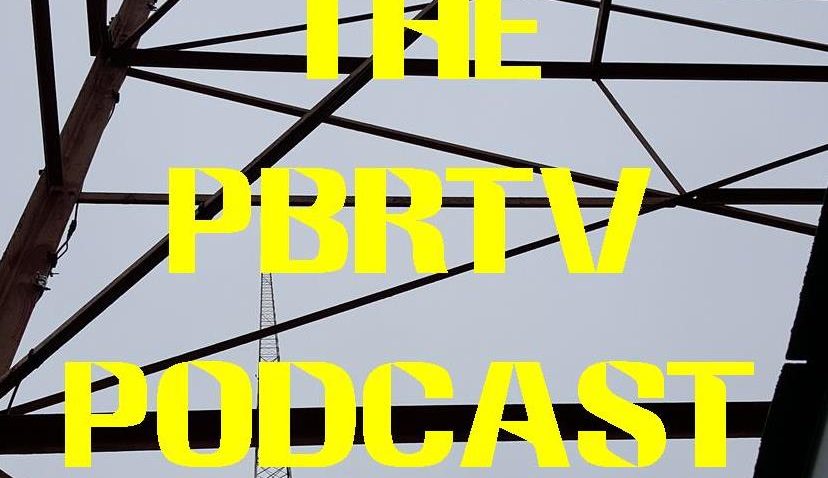Creating ‘QED … at DuMont’s expense?
May 4, 2009. . .
The FCC’s headaches soon multiplied. CBS and RCA (parent company of NBC) began hammering the commission to approve one of two competing, incompatible color TV standards.
And despite UHF’s handicaps, some engineers were arguing that the 12 VHF channels (2 through 13) were not enough to serve the entire U.S. They urged the FCC to move everything to UHF’s 69 channels instead.
Then along came the Korean War, which forced electronics companies to divert research and development away from TV and toward defense technology.
Pulled in many different competing directions, the process of creating new TV stations ground to a halt.
. . .
Meanwhile, Pittsburgh Mayor David L. Lawrence — a national power broker in the Democratic Party and a close ally of President Harry Truman — was leading the fight to get 12 percent of all TV channels reserved for non-commercial, educational use.
The FCC promised Lawrence’s committee that it could have Channel 13, if they could raise the money to equip and operate the station.
Leland Hazard, attorney for giant Pittsburgh Plate Glass Co. (now known by its initials, PPG) was asked for help.
A patron of the arts and a champion of charitable causes, Hazard was a member of the Allegheny Conference for Community Development, which trying to remake Pittsburgh’s “smoky city” image — an effort that eventually became known as the city’s “Renaissance.”
. . .

At the time, educational TV appeared to be a “lost cause,” Hazard wrote years later in his autobiography, Attorney for the Situation (Carnegie-Mellon University Press, 1975).
Although he was sympathetic to the committee, Hazard didn’t object to commercial TV. “Television was a business, a good business, a proper business,” he said, adding that “much excellence is made available on the profit-making channels.”
But Hazard, a graduate of the University of Missouri and Harvard Law School, also strongly believed that what he called the “intellectual minorities” should “have their fair share of television,” and that commercial TV wasn’t the place for serious cultural programs.
. . .
In the early days of TV, Hazard remembered, commercial television was making some half-hearted attempts at cultural programs.
Even the most sincere stations and networks were having a hard time balancing what he calls the “juxtaposition” of “soap and Shakespeare, shaving cream and Socrates, Christmas cards and Christmas carols, vitamins and virtues.”
“Such was the zeal of the advertising agencies that frequently one could not be sure whether the soap was to gain luster from Shakespeare or vice versa,” Hazard wrote.
Worse yet, children’s programming as almost completely absent, he said, except for “the clatter of hooves in the video violence of the Westerns.”
. . .
Hazard agreed to present the proposal to create WQED to the Allegheny Conference. He hit two powerful roadblocks.
The conservative business leaders — bankers, brokers, industrialists — that made up the board objected in principle to the idea of a community-owned, non-commercial TV station.
“Who would manage the station?” they asked, according to Hazard. “What influences, subversive, Communist, Democratic, or otherwise objectionable, might gain control?”
One bank executive told Hazard, “I am against it because it is not commercial.” Hazard responded, “Why should television be considered the exclusive property of the bazaar?”
. . .
 Some people at Westinghouse weren’t happy, either. A powerful corporation and operator of the region’s most popular radio station, KDKA, it was forced to sit on the TV sidelines in its hometown while DuMont raked in money as operator of WDTV.
Some people at Westinghouse weren’t happy, either. A powerful corporation and operator of the region’s most popular radio station, KDKA, it was forced to sit on the TV sidelines in its hometown while DuMont raked in money as operator of WDTV.
Westinghouse offered a compromise to the FCC and the Allegheny Conference, according to Hazard. If the FCC gave it Channel 13 to operate as KDKA-TV, it would allow a community group to “share” the frequency.
Putting the station into private, profit-making hands appealed to many of the Allegheny Conference board members, but not to Lawrence or Hazard.
“There were faces black with feeling around the Conference board,” Hazard wrote. “It was not fun.”
. . .
After “weeks of tension,” in Hazard’s words, the Allegheny Conference was slated to receive a report on the feasibility of a community-run TV station on July 14, 1952.
Hazard decided to appeal directly — as one titan of industry to another — to Westinghouse CEO Gwilym Price. He called him on the phone before the meeting.
“Bill, do you say I should abandon my efforts for educational television in Pittsburgh?” Hazard asked.
. . .
Price paused. “No, Leland, I don’t,” he finally answered.
“In those brief words, WQED received its first big contribution,” Hazard wrote. At the Allegheny Conference meeting a few days later, Westinghouse’s representative was noticeably absent.
Apparently word had come down from the CEO’s office — the corporation was not to object to the report, which was favorable to the creation of WQED. The Allegheny Conference board reluctantly acquiesced.
Westinghouse also “gave to WQED the tower which it had (purchased) in anticipation of getting Channel 13, and has been a good and generous friend ever since,” wrote Hazard, who became the first president of the station’s board of directors.
. . .
In 1954, Westinghouse offered DuMont $10 million for WDTV — a record price for a TV station. The struggling network happily accepted the money.
As PBRTV friend and DuMont historian Clarke Ingram has noted, income from its Pittsburgh operation (estimated at $4 million net annually) was the only thing keeping the network afloat.
“It also gave DuMont leverage with respect to obtaining air time on the affiliates of the other networks in large markets, since DuMont had the only VHF station in Pittsburgh on which the other networks could clear their programming,” Ingram notes.
Within months of transferring WDTV to Westinghouse, the DuMont Network ceased operation.

Leland Hazard then leaned on PPG to donate land in Oakland for WQED’s tower, and other corporations followed with donations of their own, along with gifts from Pittsburgh’s wealthiest foundations.
The station’s early success helped inspire public TV pioneers in Boston, San Francisco and Chicago, and provided a model for non-commercial TV in the United States.
WQED was soon a key outlet for the new National Educational Television network and the home base for many programs distributed worldwide, including “Mister Rogers’ Neighborhood” (for which Hazard served as executive producer).
By the time of Hazard’s death in 1980, virtually all of the 242 public TV stations allocated by the FCC back in the 1950s had been occupied.
The evolution of TV in Pittsburgh — and nationally — might have taken some different turns if Gwilym Price and Westinghouse had dug in their heels, or Hazard hadn’t taken up the cause of educational TV.
Apparently, it helps to have a good attorney on your side!
A casual phone conversation between Pittsburgh attorney Leland Hazard and the president of Westinghouse Electric probably changed the future of American television.
Not only did the call clear the way for America’s first public TV station — WQED, which celebrated its 55th anniversary on the air this past April 1 — it sealed the fate of the DuMont Television Network.
 If Hazard hadn’t nudged Westinghouse’s Gwilym Price into buying DuMont’s Pittsburgh outlet, WDTV, the network might have survived into the late 1950s and beyond.
If Hazard hadn’t nudged Westinghouse’s Gwilym Price into buying DuMont’s Pittsburgh outlet, WDTV, the network might have survived into the late 1950s and beyond.
But WQED would have been severely hampered, forced to share a frequency with KDKA-TV.
. . .
At issue was the Federal Communications Commission’s so-called “TV freeze” of 1948.
With 100 TV stations on the air and more than 700 applications waiting, the FCC suddenly put the brakes on granting any new licenses.
The problem was the relatively primitive TV sets of the era, which depended on temperamental vacuum-tube circuits in their tuners. The margin between a good picture and a lousy one was thin, and as new stations signed on, interference complaints multiplied.
And that was on VHF, where Pittsburgh’s DuMont-owned WDTV, Johnstown’s WJAC-TV, and Erie’s WICU-TV were located. On UHF, which used much shorter wavelengths, vacuum-tube-era TV sets were practically useless.

